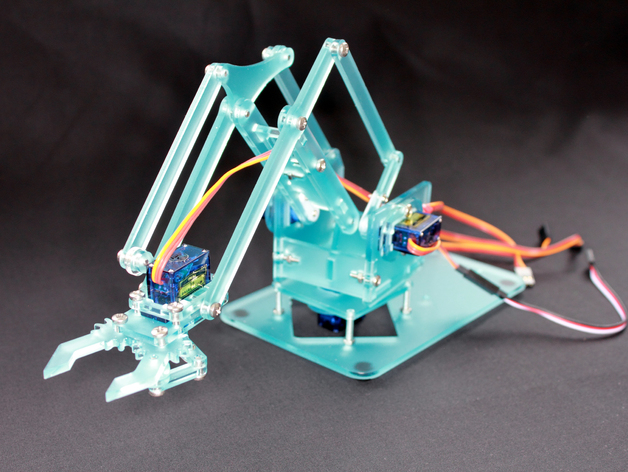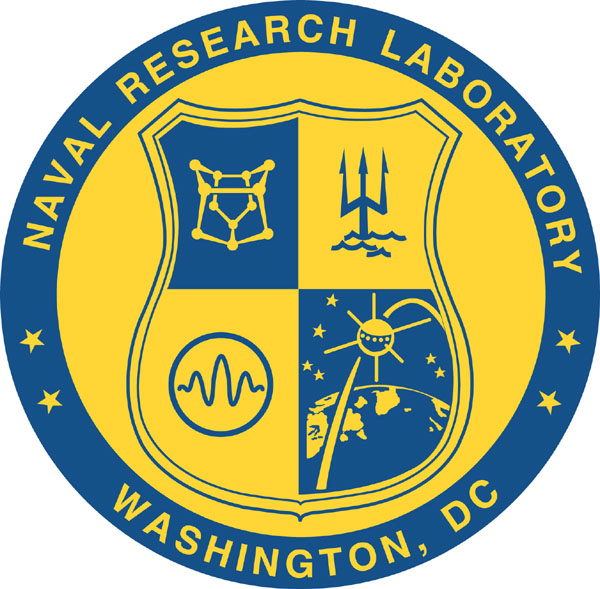|
Robotic Servicing Of Geosynchronous Satellites Program
DARPA's Robotic Servicing of Geosynchronous Satellites (RSGS) program leverages commercial space technology to inspect and repair aging or broken satellites in the geosynchronous Earth orbit (GEO), about 35,786 kilometers (22,236 miles) from Earth. Background According to DARPA, no options exist for visual diagnosis, upgrades, or repairs of a malfunctioning satellite's components, thus rendering these satellites space junk. In 2020, DARPA selected Northrop Grumman's subsidiary SpaceLogistics as its RSGS partner. The U.S. Naval Research Laboratory designed and developed the RSGS robotic arm with DARPA funding. The robotic arm has completed key tests and is on track to be launched to GEO in 2024 by Northrop Grumman's 3000-kilogram spacecraft. After launch in 2024, there will be a period for checkout and calibration activities. The DARPA robotic mechanic is anticipated to start making on-orbit service calls in space in 2025. See also * On-orbit satellite servicing * OSAM-1 * ... [...More Info...] [...Related Items...] OR: [Wikipedia] [Google] [Baidu] |
DARPA
The Defense Advanced Research Projects Agency (DARPA) is a research and development agency of the United States Department of Defense responsible for the development of emerging technologies for use by the military. Originally known as the Advanced Research Projects Agency (ARPA), the agency was created on February 7, 1958, by President Dwight D. Eisenhower in response to the Soviet Union, Soviet launching of Sputnik 1 in 1957. By collaborating with academia, industry, and government partners, DARPA formulates and executes research and development projects to expand the frontiers of technology and science, often beyond immediate U.S. military requirements.Dwight D. Eisenhower and Science & Technology, (2008). Dwight D. Eisenhower Memorial CommissionSource The name of the organization first changed from its founding name, ARPA, to DARPA, in March 1972, changing back to ARPA in February 1993, then reverted to DARPA in March 1996. ''The Economist'' has called DARPA "the agency that ... [...More Info...] [...Related Items...] OR: [Wikipedia] [Google] [Baidu] |
OSAM-1
OSAM-1 (On-orbit Servicing, Assembly, and Manufacturing 1) was a 2016-2024 conceptual NASA mission and spacecraft designed to test on-orbit refueling of satellites. The program was cancelled in 2024, two years ahead of its planned launch date. It was initially known as Restore-L. Originally scheduled to launch in 2020, its launch at the time of cancellation was planned for no earlier than 2026. The primary objective of the concept mission and spacecraft was the complex refueling of Landsat 7, a satellite launched in 1999, that was not designed for on-orbit servicing. This would have involved grasping the satellite with a mechanical arm, gaining access to the satellite's fuel tank by cutting through insulation and wires and unscrewing a bolt, and then attaching a hose to pump in hydrazine fuel. At the time the mission was conceived, it was expected to be the first refueling of a satellite in space, and a demonstration of the potential to repair some of the thousands of active sat ... [...More Info...] [...Related Items...] OR: [Wikipedia] [Google] [Baidu] |
Robotic Satellite Repair Vehicles
Robotics is the interdisciplinary study and practice of the design, construction, operation, and use of robots. Within mechanical engineering, robotics is the design and construction of the physical structures of robots, while in computer science, robotics focuses on robotic automation algorithms. Other disciplines contributing to robotics include electrical engineering, electrical, control engineering, control, software engineering, software, Information engineering (field), information, electronics, electronic, telecommunications engineering, telecommunication, computer engineering, computer, mechatronic, and materials engineering, materials engineering. The goal of most robotics is to design machines that can help and assist humans. Many robots are built to do jobs that are hazardous to people, such as finding survivors in unstable ruins, and exploring space, mines and shipwrecks. Others replace people in jobs that are boring, repetitive, or unpleasant, such as cleaning, ... [...More Info...] [...Related Items...] OR: [Wikipedia] [Google] [Baidu] |
DARPA Projects
The Defense Advanced Research Projects Agency (DARPA) is a research and development agency of the United States Department of Defense responsible for the development of emerging technologies for use by the military. Originally known as the Advanced Research Projects Agency (ARPA), the agency was created on February 7, 1958, by President Dwight D. Eisenhower in response to the Soviet Union, Soviet launching of Sputnik 1 in 1957. By collaborating with academia, industry, and government partners, DARPA formulates and executes research and development projects to expand the frontiers of technology and science, often beyond immediate U.S. military requirements.Dwight D. Eisenhower and Science & Technology, (2008). Dwight D. Eisenhower Memorial CommissionSource The name of the organization first changed from its founding name, ARPA, to DARPA, in March 1972, changing back to ARPA in February 1993, then reverted to DARPA in March 1996. ''The Economist'' has called DARPA "the agency that ... [...More Info...] [...Related Items...] OR: [Wikipedia] [Google] [Baidu] |
Robotic Arm
A robotic arm is a type of mechanical arm, usually programmable, with similar functions to a human arm; the arm may be the sum total of the mechanism or may be part of a more complex robot. The links of such a manipulator are connected by joints allowing either rotational motion (such as in an articulated robot) or translational (linear) displacement. The links of the manipulator can be considered to form a kinematic chain. The terminus of the kinematic chain of the manipulator is called the end effector and it is analogous to the human hand. However, the term "robotic hand" as a synonym of the robotic arm is often proscribed. Types * Cartesian robot / Gantry robot: Used for pick and place work, application of sealant, assembly operations, handling machine tools and arc welding. It is a robot whose arm has three prismatic joints, whose axes are coincident with a Cartesian coordinator. * Collaborative robot / Cobot: Cobot applications contrast with traditional industri ... [...More Info...] [...Related Items...] OR: [Wikipedia] [Google] [Baidu] |
Orbital Express
Orbital Express: ASTRO and NEXTSat Orbital Express was a space mission managed by the United States Defense Advanced Research Projects Agency (DARPA) and a team led by engineers at NASA's Marshall Space Flight Center (MSFC). The Orbital Express program was aimed at developing "a safe and cost-effective approach to autonomously service satellites in orbit". The system consisted of two spacecraft: the ASTRO servicing satellite, and a prototype modular next-generation serviceable satellite; NEXTSat. The mission launched from Cape Canaveral Air Force Station on 8 March 2007, aboard an Atlas V expendable launch vehicle. The launch was part of the United States Air Force Space Test Program STP-1 mission. Program management and contractors The Orbital Express program was managed by the DARPA Tactical Technology Office (TTO). The servicing satellite, ASTRO was developed by Boeing Integrated Defense Systems, which included the Orbital Express Demonstration Manipulator System (OED ... [...More Info...] [...Related Items...] OR: [Wikipedia] [Google] [Baidu] |
Robotic Refueling Mission
The Robotic Refueling Mission (RRM) is a NASA technology demonstration mission with equipment launches in both 2011 and 2013 to increase the technological maturity of in-space rocket propellant transfer technology by testing a wide variety of potential propellant transfer hardware, of both new and existing satellite designs. The first phase of the mission was successfully completed in 2013. The second phase experiments continued in 2015. The third phase ~2018 suffered a cryocooler failure in 2019 and loss of methane. History Development The Robotic Refueling Mission was developed by the Satellite Servicing Capabilities Office at the Goddard Space Flight Center (GSFC). It was planned to demonstrate the technology and tools to refuel satellites in orbit by robotic means. After the proof of concept, the long-term goal of NASA is to transfer the technology to the commercial sector. Technology demonstration Phase 1 RRM was designed with four tools, each with electronics an ... [...More Info...] [...Related Items...] OR: [Wikipedia] [Google] [Baidu] |
On-orbit Satellite Servicing
On-orbit satellite servicing refers to refueling or repairing space satellites while in orbit. New commercial interest in on-orbit servicing of satellites is in large part due to the decreased costs of launching commercial satellites and the rise of low orbit, rather than geostationary, satellites for which servicing costs less. History Although servicing of satellites has been theoretically considered since the early days of spaceflight, little was done. The term is usually thought of as meaning autonomous or telerobotic servicing of a satellite by robotic spacecraft, but can also mean servicing that occurs by human astronauts, such as repeated and regular servicing of the International Space Station (ISS) starting in 1998. The first orbital repair was made by James van Hoften and George Nelson in 1984 during their mission to Solar Maximum Mission (SMM) satellite. One famous sequence of servicing a satellite by astronauts was the several flights of the Space Shuttle to t ... [...More Info...] [...Related Items...] OR: [Wikipedia] [Google] [Baidu] |
Satellite
A satellite or an artificial satellite is an object, typically a spacecraft, placed into orbit around a celestial body. They have a variety of uses, including communication relay, weather forecasting, navigation ( GPS), broadcasting, scientific research, and Earth observation. Additional military uses are reconnaissance, early warning, signals intelligence and, potentially, weapon delivery. Other satellites include the final rocket stages that place satellites in orbit and formerly useful satellites that later become defunct. Except for passive satellites, most satellites have an electricity generation system for equipment on board, such as solar panels or radioisotope thermoelectric generators (RTGs). Most satellites also have a method of communication to ground stations, called transponders. Many satellites use a standardized bus to save cost and work, the most popular of which are small CubeSats. Similar satellites can work together as groups, forming constellatio ... [...More Info...] [...Related Items...] OR: [Wikipedia] [Google] [Baidu] |
Spacecraft
A spacecraft is a vehicle that is designed spaceflight, to fly and operate in outer space. Spacecraft are used for a variety of purposes, including Telecommunications, communications, Earth observation satellite, Earth observation, Weather satellite, meteorology, navigation, space colonization, Planetary science, planetary exploration, and Space transport, transportation of Human spaceflight, humans and cargo spacecraft, cargo. All spacecraft except single-stage-to-orbit vehicles cannot get into space on their own, and require a launch vehicle (carrier rocket). On a sub-orbital spaceflight, a space vehicle enters space and then returns to the surface without having gained sufficient energy or velocity to make a full Geocentric orbit, Earth orbit. For orbital spaceflights, spacecraft enter closed orbits around the Earth or around other Astronomical object, celestial bodies. Spacecraft used for human spaceflight carry people on board as crew or passengers from start or on orbit ... [...More Info...] [...Related Items...] OR: [Wikipedia] [Google] [Baidu] |
United States Naval Research Laboratory
The United States Naval Research Laboratory (NRL) is the corporate research laboratory for the United States Navy and the United States Marine Corps. Located in Washington, DC, it was founded in 1923 and conducts basic scientific research, applied research, technological development and prototyping. The laboratory's specialties include plasma physics, space physics, materials science, and tactical electronic warfare. NRL is one of the first US government scientific R&D laboratories, having opened in 1923 at the instigation of Thomas Edison, and is currently under the Office of Naval Research. As of 2016, NRL was a Navy Working Capital Fund activity, which means it is not a line-item in the US Federal Budget. Instead of direct funding from Congress, all costs, including overhead, were recovered through sponsor-funded research projects. NRL's research expenditures were approximately $1 billion per year. Research The Naval Research Laboratory conducts a wide variety of ... [...More Info...] [...Related Items...] OR: [Wikipedia] [Google] [Baidu] |







